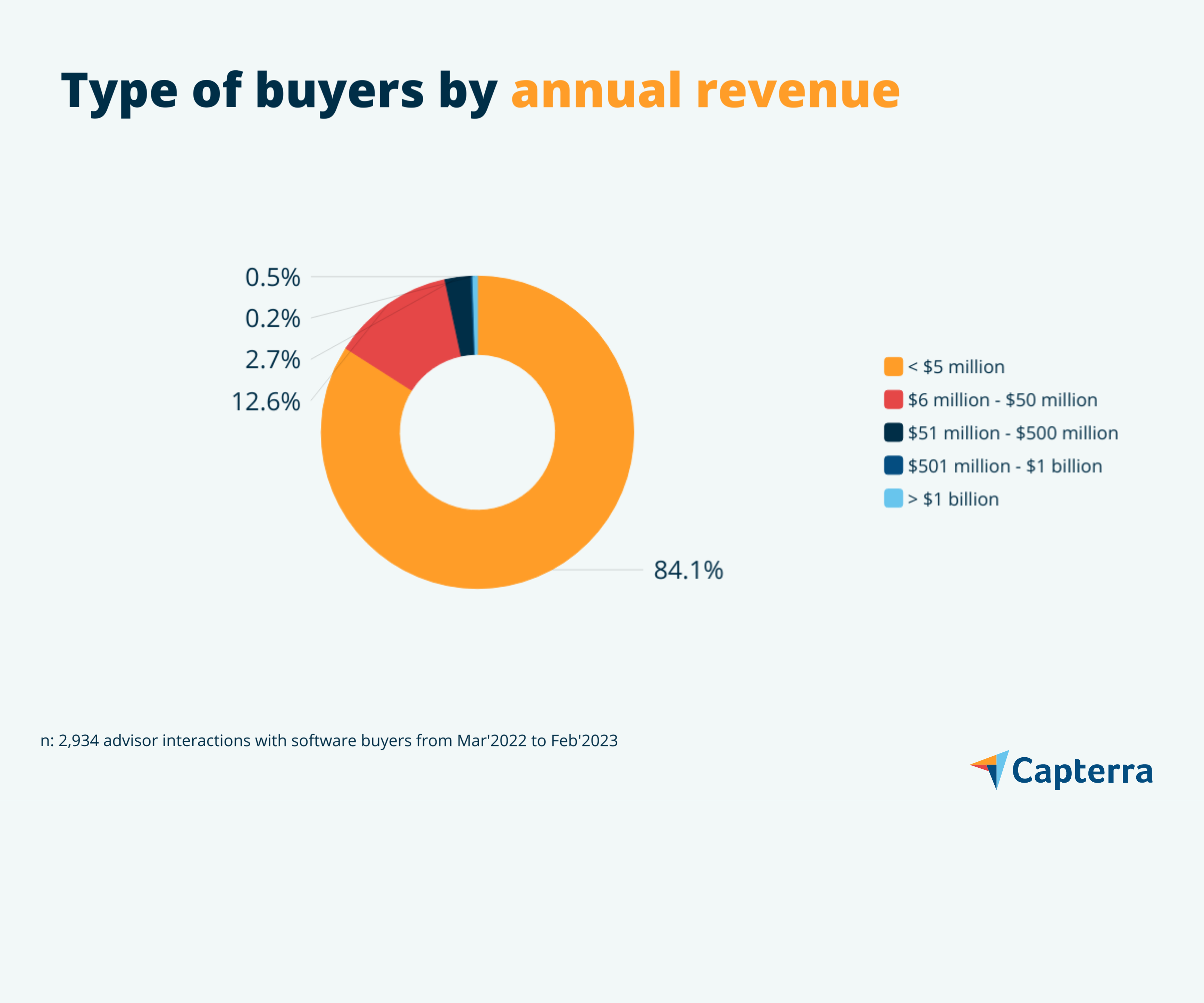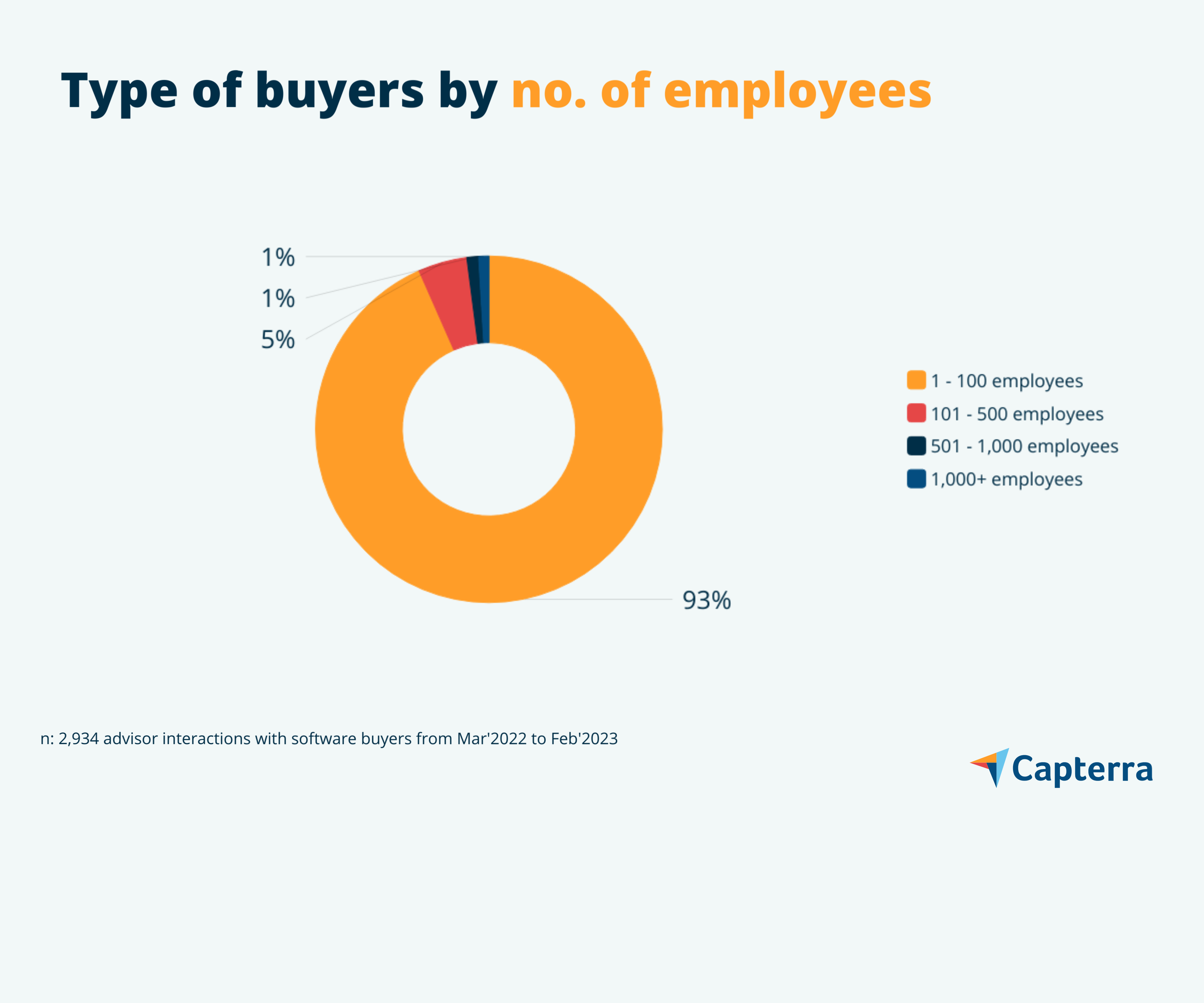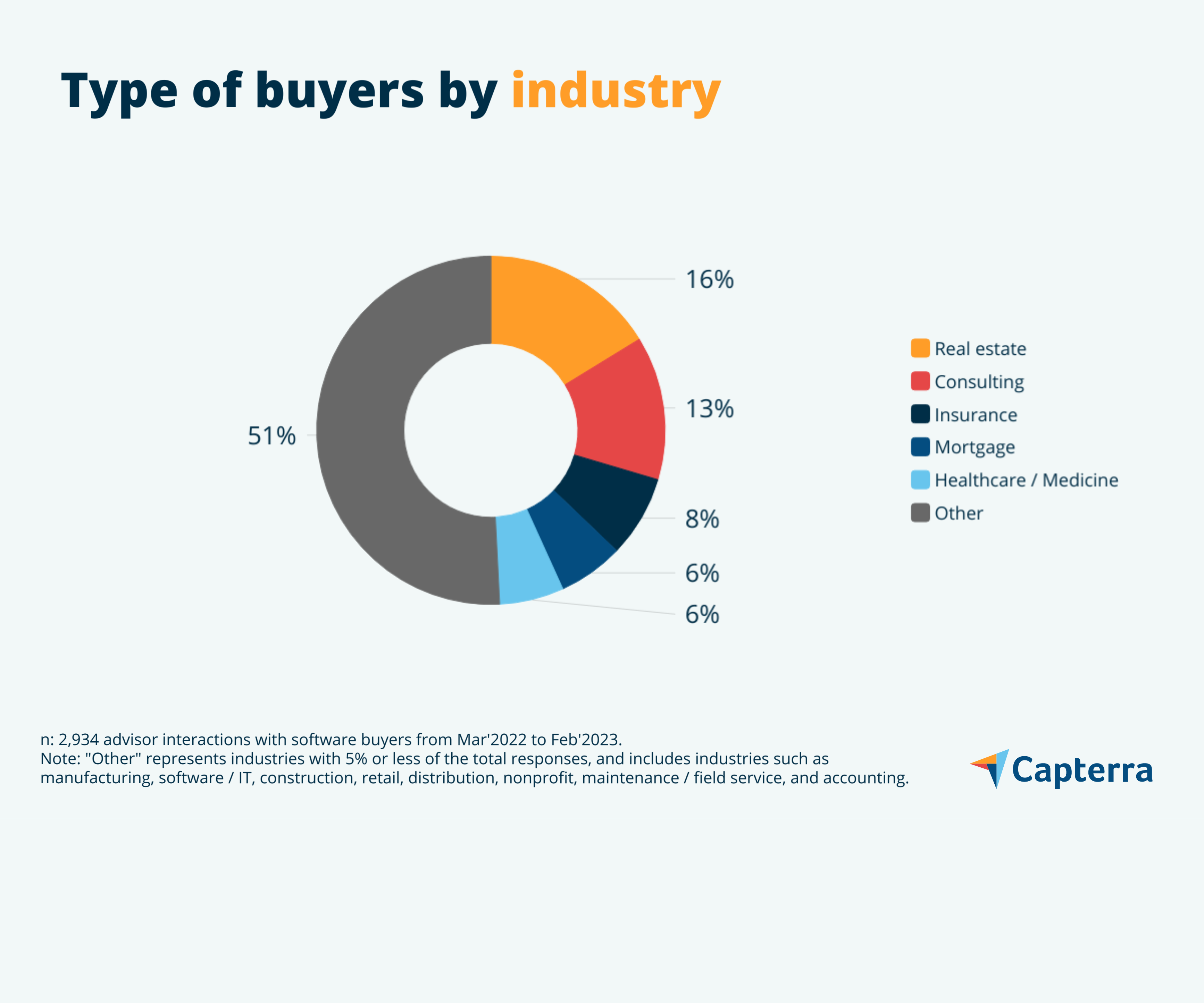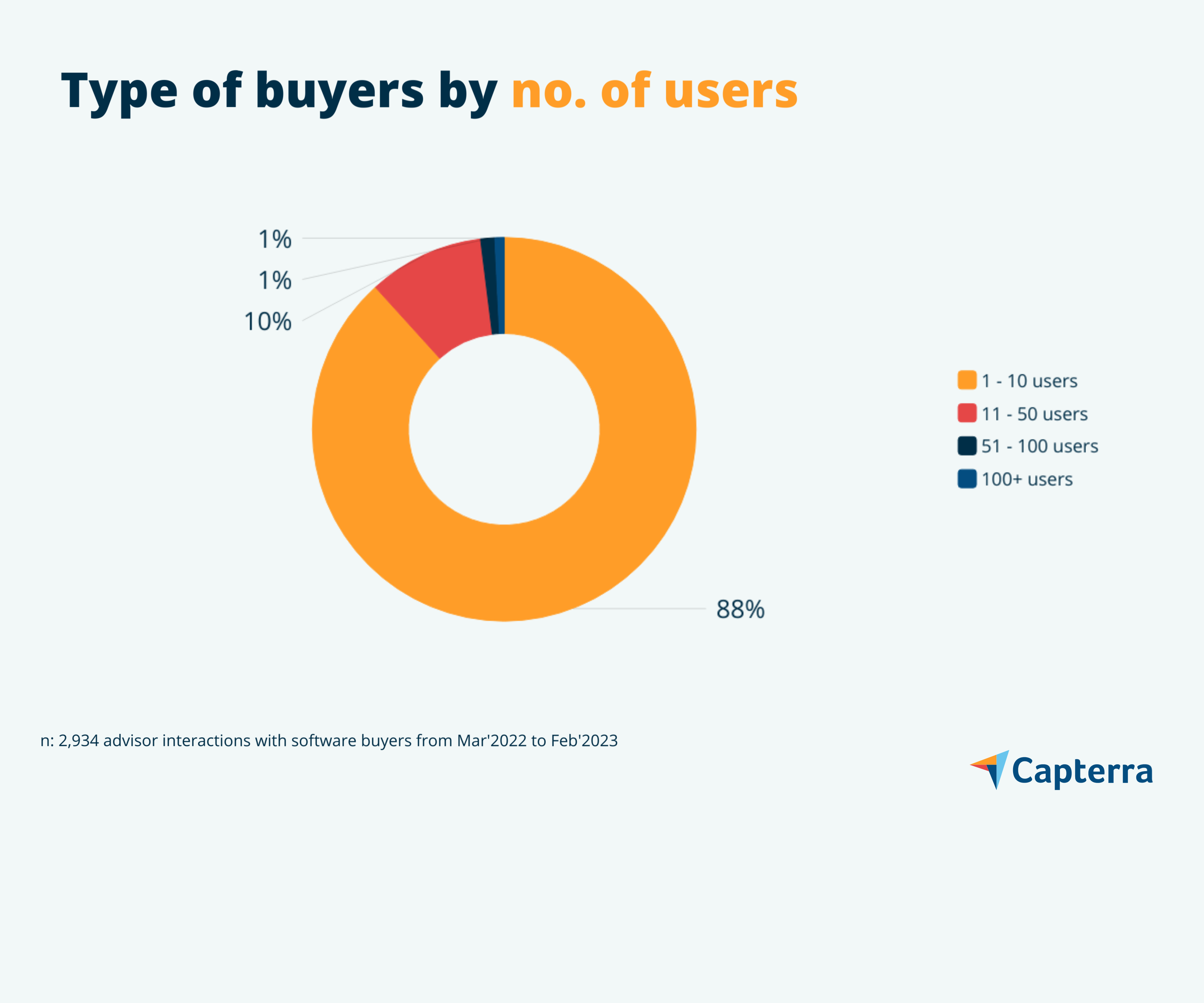Learn from other buyers’ budgets, feature needs, and pain points to aid your CRM software search.
Eighty-three percent of small and midsize businesses (SMBs) cited customer relationship management (CRM) software as either very effective or moderately effective in helping them achieve their marketing goals, according to our 2021 Marketing Technology Survey.*
Because of the outsized impact CRM systems have on marketing and sales efforts, it’s important to find the right tool for the specific needs of your business. This is why Capterra software advisors speak with thousands of decision-makers evaluating new CRM software for their business each year.
Recently, we’ve mined those conversations for insights about budgets, feature needs, and pain points to aid your own software search.
/ Key insights
Many businesses using general office software are in need of a dedicated CRM tool.
Businesses are replacing current CRM software due to lack of efficiency and functionality, as well as difficulty using the software.
Buyers are likely to pay $63 to $94 per user, per month for a CRM tool.
Sales automation is the most requested functionality buyers look for in CRM software.
Many businesses find general office software insufficient for marketing needs
Our research indicates that 45% of businesses still use general-purpose software, such as Outlook and Excel, to manage customer interactions, send marketing emails, and maintain contact information. However, these generic tools don’t meet the same requirements as a dedicated CRM system.
By capturing and analyzing customer data, CRM tools can provide insights into customer behavior, preferences, and needs. This centralized information can then be used to tailor marketing and sales strategies to specific customer segments, promoting cross-functional collaboration, driving revenue growth, and improving the overall customer experience.
Using a spreadsheet for the same purpose, to the extent it’s possible at all, generally takes more time, is subject to human error, and may not be as easily shareable. Further, such manual approaches often require a user to know the exact insights they want to derive, whereas a CRM may uncover answers to questions a user might not even have thought to ask.

/ Pro tip
Identify any gaps in customer data collection and customer relationship management with your existing software to research potential solutions.
Businesses are switching CRM software to improve efficiency, functionality, and usability
In addition to advising first-time buyers of CRM software, we also speak with businesses that want to replace an existing CRM system they are dissatisfied with. These buyers say there are three main reasons they are switching their CRM systems: inefficiency (30%), lack of functionality (20%), and difficulty using the software (20%).
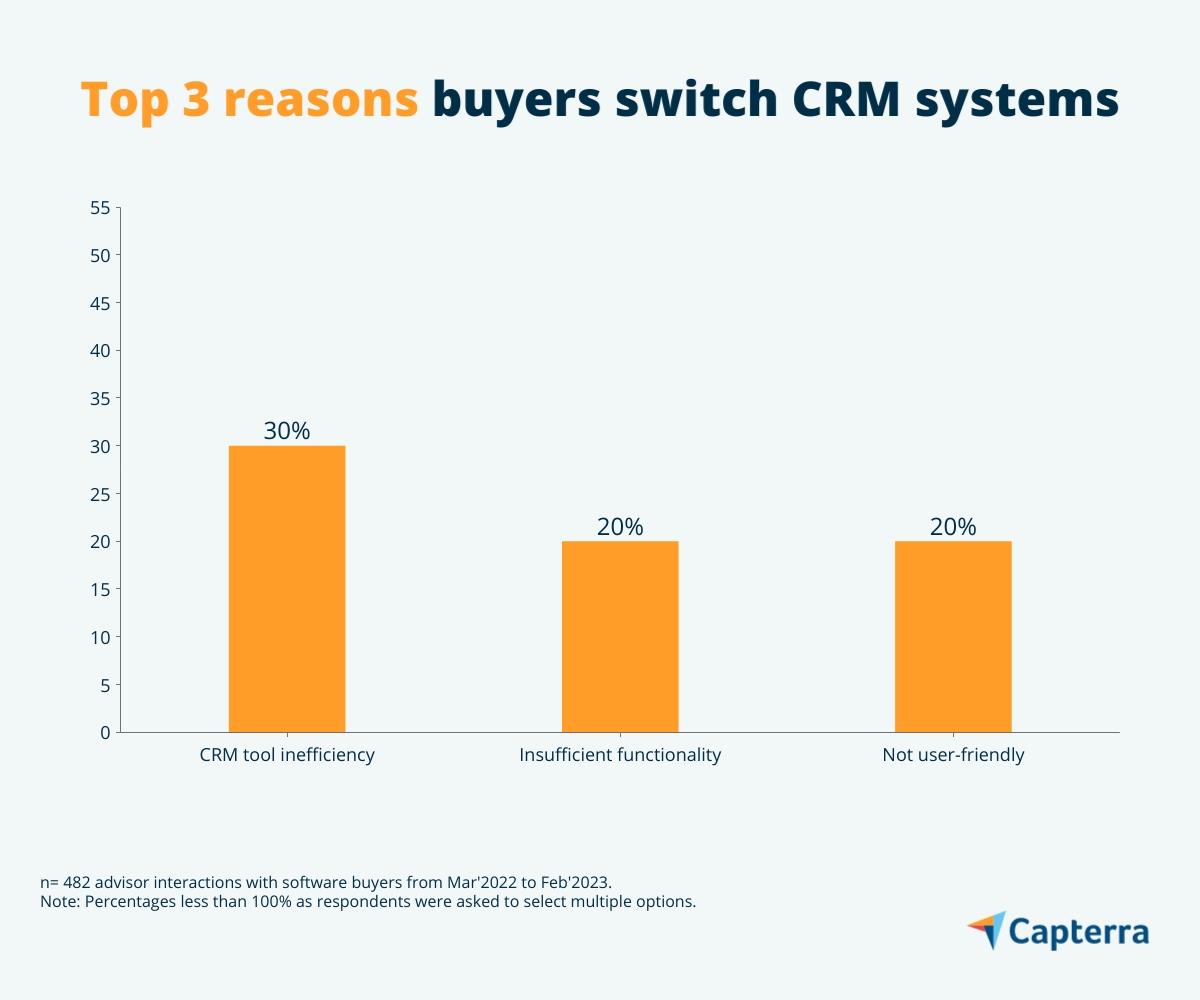
The conversations our advisors had with CRM buyers provide real-life examples of the common challenges businesses face as a result of not having the correct CRM tools for their specific needs.
Tool efficiency, or lack thereof, can make all the difference when trying to close a deal. During a phone call with a prospect, for example, a sales representative must be able to quickly access customer data. If a business is using a slow-loading CRM tool, this creates a reduction in productivity and lost opportunities.
Functionality is key to streamlining customer relationship management efforts. If a marketing manager wants to automate email campaigns for customers based on their preferences and behavior, the CRM tool must offer automation features. If not, the marketing manager will have to manually create and send emails, resulting in a time-consuming and error-prone process.
Ease-of-use is a must for CRM software. Sales and marketing associates need to quickly and easily navigate the system in order to maintain customer data, manage emails, and track successful campaigns. For example, if a newly hired sales representative needs extensive training to use a complex CRM tool, they miss out on spending that time devoted to building new client relationships.
/ Pro tip
Get in touch with your top choices and set up a demo. Include key stakeholders (such as your sales team) and a sampling of end users in the demo so you can get a varied perspective from people who will actually be using the tool.
Take advantage of free trials. You may find that a product's basic tier perfectly meets your needs or that the features you once thought you'd desire aren't worth the money. Importing a test version of your real data and allowing staff members who will use the software to do the trial can produce even more insightful results.
Average buyers’ budgets range from $63 to $94 per user, per month
The budget for purchasing CRM software varies from industry to industry based on factors such as organization size, the number of users, and the specific features and functionalities required.
However, the overall average budget businesses are willing to pay per user, per month is $76.
The chart below highlights the average buyer budget per user, per month for the top five industries interested in CRM software.
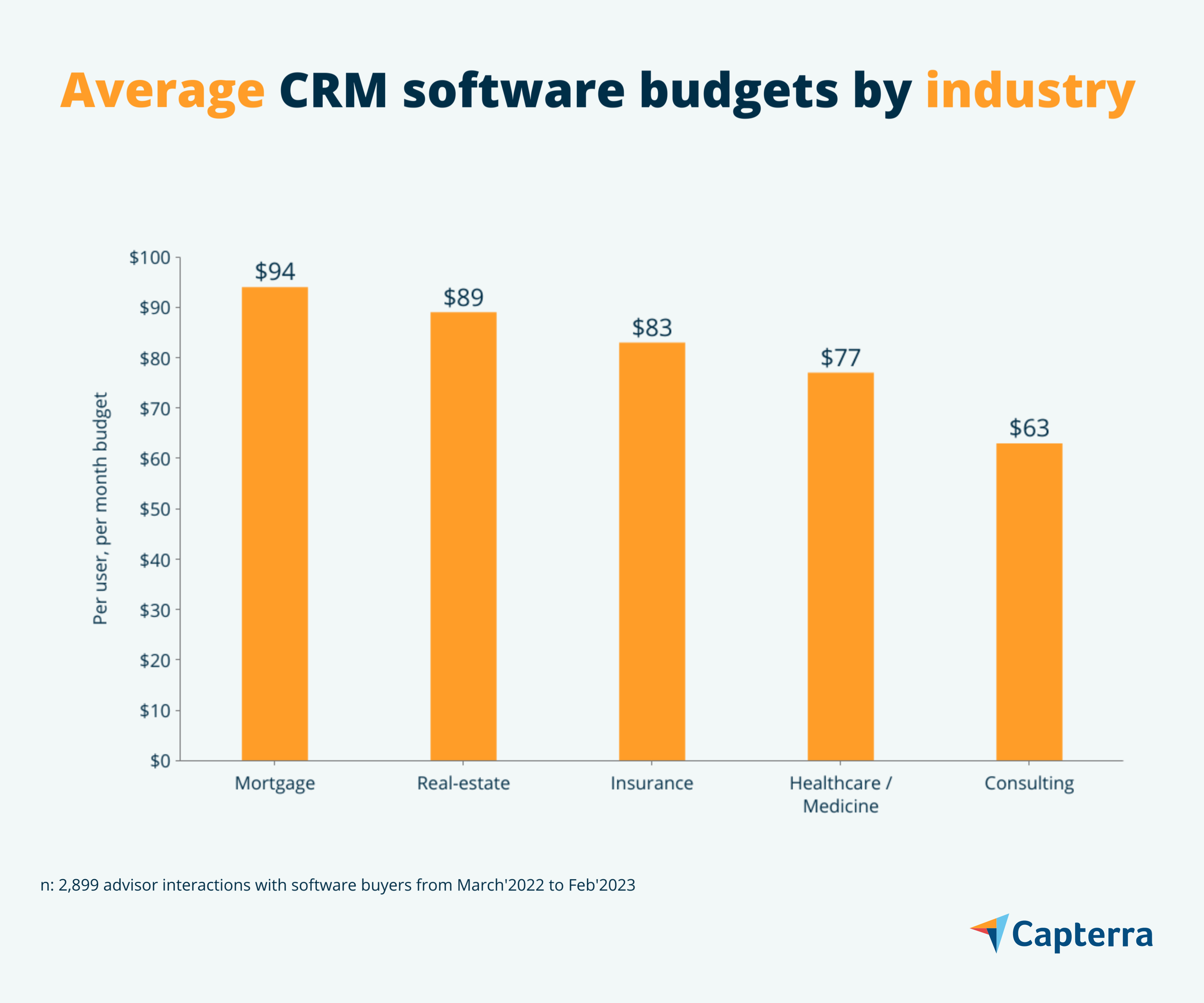
The average budget for each industry slightly differs from the overall average due to industry-specific requirements.
While healthcare organizations and the real estate businesses both rely on CRM software to manage client and patient relationships, track appointments, and automate marketing software, real estate focuses more on sales metrics such as tracking leads.
Consulting firms, on the other hand, require CRM software to manage client relationships, track projects and automate invoicing and billing.
Ultimately, the more central a CRM tool is to your industry’s performance, the more likely your business will require complex functionality and features, which can drive up costs.
/ Pro tip
Before deciding on an appropriate budget, take time to evaluate the true cost of your purchase. You should also negotiate your service-level agreement (SLA) with any possible vendors early on to avoid being caught off guard by any hidden fees later on.
Sales automation is most requested feature by buyers
In addition to talking to prospective CRM buyers, we looked at reviews from CRM software users—Capterra has over 60,000—to find out which CRM features are most critical for daily work.
Ninety-eight percent of buyers seek sales automation features, such as contact management, sales pipeline management, lead management, and workflow management. Examining reviews from actual software users underscores the criticality of contact management in particular.
Buyers, who are typically decision-makers in an organization, prioritize sales automation capabilities to assist with managing contacts, workflow, and sales leads more efficiently. With these features, sales teams can stay more organized by reducing manual tasks to ultimately close deals faster.
Users, who are typically sales representatives and other front-line employees, prioritize contact management to manage their relationships with customers and prospects. With such features, users can stay on top of their contacts, follow up with leads and customers in a timely manner, and provide better customer service.
Most CRM software offers sales automation, including contact management, which meets the needs of both buyers and users. While researching for the right tool, look for products that offer the most efficient and user-friendly interfaces. This can provide sales teams with a more streamlined solution from the start, helping to build and maintain more successful customer relationships.
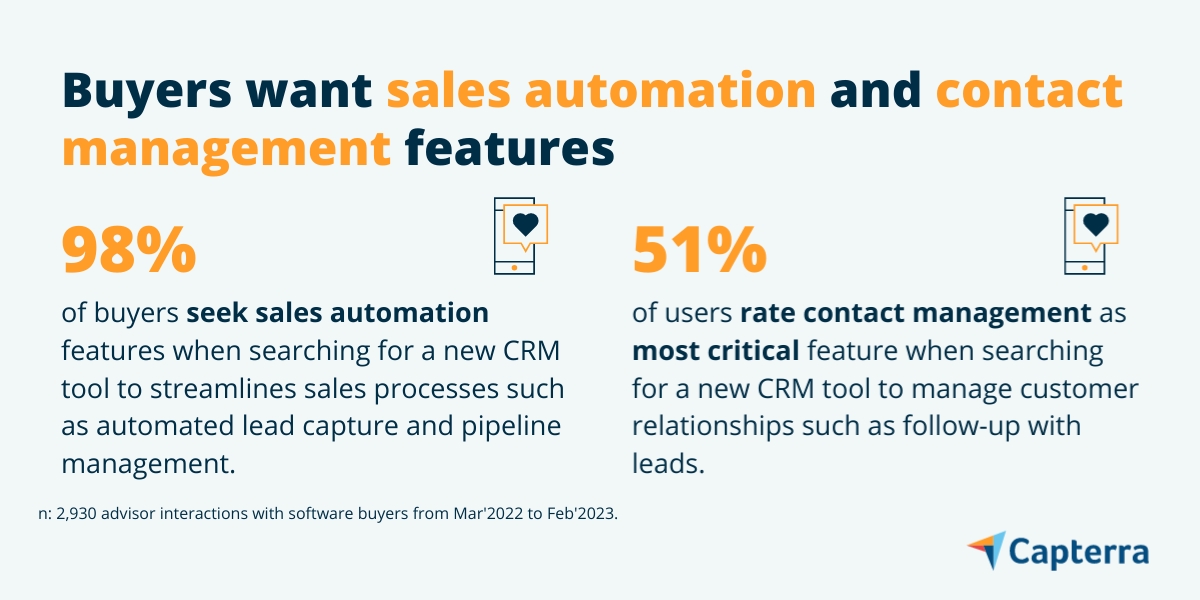
/ Pro tip
Before you start your search, create a list of the features and functions you need from your CRM software. The key here is to fully understand your business’ unique functionalities before you spend time and money on new ones.
More resources for your software search
Whether you’re looking to buy new CRM software or replace your existing tool, here are some additional resources to aid your software search:
Start with our interactive CRM software directory to compare hundreds of products, filter your search by specific features, and read comprehensive reviews from SMB leaders.
Check out top-rated CRM software based on user ratings and popularity in the Capterra Shortlist.
Review our CRM software pricing guide and CRM buyers guide to compare tools and better understand the market.
Buyer demographics
The buyers we interacted with are largely small businesses representing a growing majority of CRM software purchases. Below you’ll find the demographics of the buyers so you can see the size and type of businesses, from annual revenue to industry.
